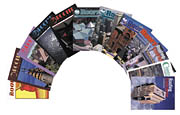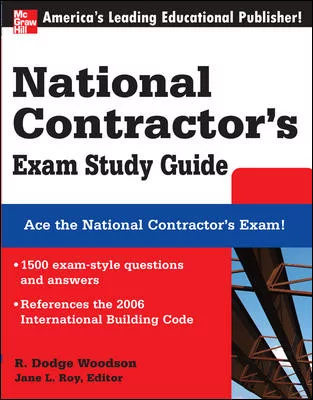Almost Legal – 20 Years of Roofing Contractor

Often when we interview contractors for stories in Roofing Contractor, they mention the fact that their offices are inundated with trade magazines. They aren’t annoyed, just somewhat bemused. But they are quick to add that they remember Roofing Contractor and look forward to reading it.
The fall of 2001 marks Roofing Contractor’s 20th anniversary. Begun as an independent magazine written by contractors for contractors, this magazine has always had a story to tell and has made sure to put the contractor first. The current staff is honored to continue this tradition, and feels that a look back at where we came from is a worthwhile endeavor. “What started as one roofing contractor’s dream is now the number one roofing publication,” says current publisher, Jill Nash. “And we think that’s something to be proud of.”
The magazine’s changes and evolution reflect the industry, and it is possible to learn and be inspired by events from the past. We hope you enjoy this glimpse into our past.

Roofer to Roofer
The first issue of what was then called The Roofer Magazine appeared in September 1981 and was published bimonthly. The magazine’s driving force was Danny Carson, a roofing contractor who created D&H Publications in order to produce a publication that would “instill the spirit of craftsmanship and pride in an industry so important to the lives of people everywhere.”Carson was deeply involved in the roofing industry. After serving as a Navy SEAL in Vietnam from 1966 to 1969, he began studying construction estimating at the University of Miami. He also began working for his brother’s roofing company, so he could learn roofing “the hard way.” Eventually graduating from his brother’s “school,” Carson worked for various roofing companies including Lee County Metal & Roofing, which he eventually bought. Carson also founded the Southwest Florida Roofing Contractors Association. In addition, he worked to establish an apprenticeship program for roofing applicators in southwest Florida.
As Carson wrote in the first issue, “The roof is not singularly the most important part of any structure, but without it, the rest has virtually no use at all. So why shouldn’t we feel as proud and strong as the roofs we create?” Carson spent two years researching and planning in order to produce what he hoped would be “a proud, independent publication dedicated to professionalism within the industry and within its pages.”
It made sense, then, that the first editor of Roofer was also a roofing contractor. Deborah L. Currier had a degree in journalism and studied law. In addition, she was the marketing director for Currier Roofing Co. in Ft. Myers, Fla. Currier served on the board of directors for the Florida Roofing, Sheet Metal and Air Conditioning Association; was the secretary treasurer of the Southwest Florida Roofing Contractors Association; and was president of the Southwest Florida Chapter of Women in Construction.
In her first editorial, she outlined some of the important areas on which Roofer would focus. She told readers that when she and Carson were developing the concept for the magazine, “We wished to make The Roofer visually pleasing – to show the beauty we hope to create.” In addition, they thought that “the more information the roofing contractors have about the equipment used on a daily basis, the better prepared they would be to use it in a cost effective and safe manner…. We wanted to compose articles that would pay more than obligatory attention to legal, safety, business and medical subjects and present an incisive look at common problems in these areas.” All of this would be in addition to manufacturer spotlights, news and product information. As Currier concluded, “We would like to invite the roofing contractors throughout this country to join us, as readers and contributors, in maximizing the potential benefits to be derived from working in the roofing business…. Let me assure you, we will work on a daily basis to make certain The Roofer is a source of pride for all of us in this industry.”
The Early Years
By the start of its third year of publication in September 1983, Roofer was able to announce that since circulation and advertising had grown sufficiently, the magazine would be published nine times a year, plus a special index on single ply – a quickly growing segment of the roofing industry. In addition, the magazine had applied for membership in the Business Publications Audit, an organization that verifies circulation. This would begin the following January. With the focus, as always, on the contractor, Roofer was now being read by consultants, engineers and specifiers. There was also a new editor, Karen S. Parker, a former business and development writer for the Tampa Tribune.In May 1984, it was the beginning of a beautiful friendship when current editorial director Rick Damato signed on as the equipment columnist. At the time, Damato was a regional sales representative with the Julien P. Benjamin Equipment Co., where he had worked for 10 years. He covered much of the Northeast, Southeast and Florida. To get an idea of how long ago this was, just a few months later, Roofer was writing about computers in construction. Parker observed, “For better or for worse, the age of computerization is upon all of us … yes, even roofers. The idea isn’t really as terrible as some of you might think.”
By September of 1985, the magazine was able to publish monthly. In making this announcement, Parker wrote: “We have grown gradually, carefully, watching the roofing market as it has grown with us.” That November, Roofer got its third editor, Shawn Holiday, who, like Rick Damato, hasn’t been able to get away from the magazine, no matter how hard he might try. Holiday started as an editorial assistant, but two months later, Carson made him the editor – a big job for a 22-year-old. “This was a big responsibility for me, but I liked the job and I liked Danny,” says Holiday. “This is something Danny would have said, but I mean it when I say that he didn’t give me a job, he gave me an opportunity. He gave me the latitude to soar or plummet, and I couldn’t let him down. I never thought this relationship would last 16 years.” Holiday continues, “Roofing contractors have to be all things – roofers, accountants, HR managers, etc. They need technical information presented to them in a useful way. Not ‘dumbing it down,’ but making it engaging and informative. Roofer struck the balance well.”
Holiday outlines a number of firsts for the magazine – the monthly product focus, the comparison charts and Roofer’s contractor-driven editorial philosophy. “Danny’s persistence made it work,” he says. “Our safety columns were an excellent tool. Back then, safety was often viewed as a hindrance. We’ve come a long way since then. Contractors have learned that they can be safe and profitable.” Roofer had also introduced a consultants column in 1984, another groundbreaking event, according to Holiday. Like the concept of safety, many contractors also viewed consultants as a hindrance. “Roofing contractors didn’t want anyone looking over their shoulders. But there are some areas where contractors can and should solicit input. Now there are improved lines of communication along the entire chain – manufacturers, suppliers, contractors, consultants and building owners.”
Moving Forward
In December 1985, Roofer introduced its first editorial advisory board with members from the Midwest Roofing Contractors Association, the Roofing Industry Educational Institute, the Roof Consultants Institute, the Army Corps of Engineers, The Asphalt Roofing Manufacturers Association, and the Single Ply Roofing Institute. The board would go on to change as the magazine did, eventually leaning toward a contractor-centered advisory board.By January 1987, the magazine introduced new departments covering association news, commercial roofing and legal issues, while continuing to include consultants, safety and equipment. The magazine also vowed to emphasize “grass roots” stories by going to more trade shows.
At the end of 1989, Holiday announced his that he was leaving and would be replaced by Kaerrie Simons, who had been the associate editor. Before leaving, Holiday announced the introduction of a second publication, The Roof Exchange, which never really got off the ground. It was intended to be a tabloid-style advertising publication for the exchange of equipment, materials and services, but it turned out to be a good idea whose time had not quite come.
What Comes Around Goes Around
At this current moment of uncertainty in the country, it may be a small comfort to read words written to the roofing industry after the Gulf War and during the last recession. “As roofing contractors, we all face 1992 with apprehension. Last year was certainly not a good year,” wrote Carson in January of that year. “I’ve seen some very good friends in the roofing industry close their doors … Knowing these individuals, they will resurface and survive, just like in other tough years, such as 1974 and 1983.” Carson tried to sound upbeat, “A ‘house-cleaning’ tends to make the future years better for the survivors…. So although 1992 begins with concern and doubt about our economic future, I believe the ability to survive in each of us will show through.”Survival of the basic kind was necessary in August 1992 when Hurricane Andrew cut a path of destruction through the northwestern Bahamas, the southern Florida peninsula, and south central Louisiana. Damage in the United States was estimated to be near 25 billion, making Andrew the most expensive natural disaster in U.S. history. Andrew hit southern Dade County, Fla., especially hard, where up to a quarter of a million people were left temporarily homeless. “Hurricane Andrew is an event that still resonates in the industry,” says Holiday, who returned to be the editor of Roofer for a six-month period that began in October 1992. “It was a personal event as well, since both Danny and I were from Miami.”
Carson drove into Miami the night after the storm hit and witnessed the devastation first hand. “There was widespread destruction in an areas that had the toughest building codes — on paper anyway,” says Holiday. “We did special reports on the event, and we learned a lot. Building codes were not enough, they had to be enforced. And a recovery plan is needed.” Holiday adds that a lot of repairs that were made after Andrew didn’t last because they were put on by “storm chasers.” “The event was a double-edged sword for the industry,” he notes. There were decent contractors doing their jobs but there was also what amounted to camps of “thugs” doing shoddy work and swindling homeowners.
The More Things Change …
In March 1993, the editorial helm changed again as Jack Klein, a contributing editor and marketing specialist in the industry, took over. A year later, it was announced that Greg Abrell was coming aboard as general manager, as well as Angela Hutto (later Williamson) as associate publisher. Shortly thereafter, Abrell and his company Construction Publications, Ft. Myers, Fla., took over from Carson. Abrell’s goal was to be the magazine that would “Cover the Industry That Covers the World.” The May 1994 issue made its focus metal roofing, and promised to be cutting edge in every issue that followed. “Everywhere you look, it’s metal, metal, and more metal,” wrote Abrell.
But the “roofer to roofer,” concept that had started in 1981 was not forgotten. While Hutto soon took over the managing of the magazine’s editorial content, guest contractors would now write the actual editorial column each month.
Recent History
While computers were something to be curious about back in 1984, by the mid 90s, as you know, they were indispensable. In late 1995, Roofer was the first roofing magazine to launch a Web site.A bigger step into the future came in June of 1997 when Roofer was bought by its current owner, Business News Publishing, Troy, Mich. BNP has been publishing trade magazines for 75 years, beginning with a weekly magazine for heating and refrigeration contractors in 1926. Roofer joined BNP’s Construction Division, which had five titles at the time, and now has 13. BNP currently publishes 40 titles overall. Then-Publisher Taggart Henderson (now the president of BNP’s Building Division and Corporate Operations) observed in a letter to readers, “While we publish many other titles, we understand that each industry is unique. You know your business better than anyone…. Roofer is the only roofing magazine with an editorial advisory board whose members, roofing contractors, truly understand the industry’s distinctive aspects.” Current Construction Division Publishing Director Tim Fausch adds that the acquisition of Roofer, “fulfilled a long-term goal of expanding BNP's role in the building trades. Over the years we've developed a great appreciation for contractors specializing in drywall, flooring, security, plumbing, and HVAC. Roofing Contractor (formerly Roofer) is a perfect complement to our industry-leading publications serving in those fields.”
Melinda North was the first BNP editor of Roofer. She ushered in the big change in February 1998 when Roofer changed its name to the Roofing Contractor you all know and love (we hope). “Rather than reworking the existing magazine, we broke the mold,” wrote North upon introducing the name change. Some of the big issues that first year of Roofing Contractor included the consolidation trend, which began with formation of General Roofing Services; and the “retailers in roofing” phenomenon, with both Home Depot and Sears testing the waters.
Current Events
Current Editorial Director Rick Damato was called on to become Roofing Contractor’s editor in January 1999, this, in addition to his “real job” as an executive at JGA Corp., Atlanta. His message to the reader then, as it is now, is: “This job really is one of delivering information. It is not just editing a magazine. … My mission will be the same as is stated in the front of the publication: To help the roofing contractor to succeed through concise, aggressive coverage of the commercial and residential industries. As it has been for the past 25 years of my professional life, my success is tied to yours.”
The next big step in Roofing Contractor’s evolution came in July 2000 when the magazine merged with Contractors Guide, a rival roofing trade magazine. Contractors Guide, launched in 1984, quickly established itself as a major force in the roofing and insulation trade press market. Upon the merger, Roofing Contractor incorporated commercial and residential insulation into its editorial mission, and brought editor Greg Ettling on board as well.
Looking Ahead
In these uncertain economic and political times, we hesitate to make many predictions. But there is one thing for certain: People will always need a roof overhead. Roofing Contractor will continue to do its part to bring you the information you need to succeed. And now more than ever, your opinion is valued. Don’t hesitate to call us or drop us a line and let us know what you need.Looking for a reprint of this article?
From high-res PDFs to custom plaques, order your copy today!






